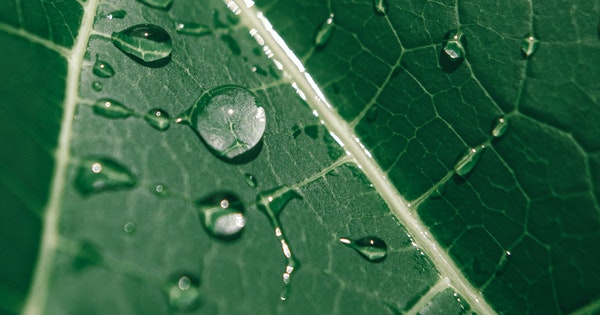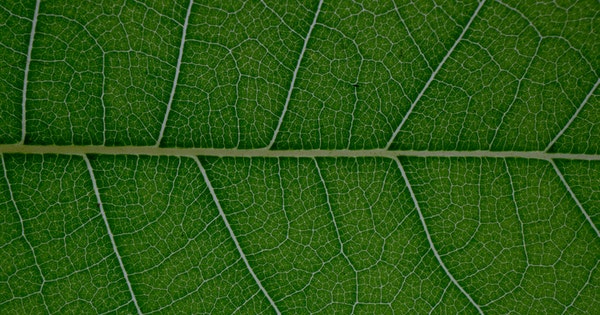Importance of Photosynthesis for Organisms(Process Photosynthesis)
Table of Contents
What is Photosynthesis?
Human beings cannot survive without oxygen. However, how is that possible that every organism is using this oxygen since the beginning of this universe and it is not decreasing? It is so because it is being used and produced simultaneously. Neither plants nor humans and animals can exist in the absence of oxygen. Photosynthesis is one of the major sources of producing oxygen and, hence, the importance of photosynthesis is evident from this fact.
The photosynthesis process
The importance of photosynthesis lies mostly in the by-product it creates during the process i.e. oxygen. Oxygen is mandatory for the survival of all living beings including humans, animals, and plants themselves. The process prepares food for plants, algae, and even some bacteria by using carbon dioxide and water available in the atmosphere and light energy produced by the sun.
The chlorophyll present in living organisms, which is also responsible for imparting them with green color, absorbs sunlight and then combines it with carbon dioxide. With this combination, it produces a chemical called adenosine triphosphate (ATP). This chemical plays an important role in the relationship between living organisms and energy. It is also known as the ‘energy currency of all life”.

What makes the photosynthesis process really important?
Several factors enhance the importance of the photosynthesis process. Some of them are discussed below:
- It is the primary source of providing atmosphere with oxygen
- It plays its role in the carbon cycle that takes place between oceans, earth, plants, and animals.
- Also plays its part in the interdependent relationship among animals, humans, and plants.
- It contributes to the survival of most of life on planet Earth.
- It is the key energy process in the case of most plants and trees.
Phases of Photosynthesis
The process of photosynthesis consists of two important phases i.e.
- Light-dependent reaction
- Light-independent reaction
During the first phase i.e. light-dependent reaction, the sunlight is converted to other forms of energy. While during the second phase i.e. Light independent reaction (also known as Calvin Cycle), carbon dioxide is taken from the air and combined with energy produced during the first phase. As a result of this combination, glucose is produced. The glucose produced is, then, broken down through the process of glycolysis and the citric acid cycle.
At last, with the help of the electron transport chain in mitochondria energy is created that is later used by plants for growth and repair. During the process, oxygen is also produced which is released through those tiny holes on the surface of leaves. Hence, it would not be wrong to say that the process of photosynthesis, transforms the energy from the sun to glucose. The sugar molecules created through the process can either be used by plants there and then or stored to be used in the future. Therefore, the importance of photosynthesis is such that living organisms cannot survive without the process of photosynthesis.
Living organisms dependent on Photosynthesis
The importance of photosynthesis gets enhanced when it helps various organisms prepare food and provide benefit to the atmosphere. Some of these organisms are mentioned below:
- Grasses
- Algae
- Seaweeds
- Phytoplankton

Factors Affecting the Process of Photosynthesis
6 important factors affect the photosynthesis process and hence impact the importance of photosynthesis.
Carbon dioxide concentration:
It is the external factor that significantly affects the rate of photosynthesis. If the percentage of carbon dioxide in the atmosphere would be more, certainly the process of photosynthesis would also take place at a higher rate.
Availability of water:
Like humans and animals, water is really important for plants too. It helps them in the process of photosynthesis and transpiration. If plants do not get an adequate amount of water, the stomata on the leaves would close and therefore, carbon dioxide would not be able to enter plants. As a result, the process of photosynthesis would not be able to take place.
Light:
It is the light energy that is converted in a different form to prepare glucose. Therefore, the photosynthesis process cannot even start in the absence of light. However, there are several other factors related to light that affect photosynthesis. It includes light intensity, light wavelength, and duration of irritation
Chlorophyll:
It is present within the plants so it can be referred to as an internal factor. In the absence of chlorophyll, the process of photosynthesis would get very slow. It is also possible that it remains incomplete in case if plants run out of energy. Chlorophyll, the green pigment present in the chloroplast of leaves, acts as a catalyst during the photosynthesis process.
Nutrients:
Several nutrient elements are important during the metabolism process. These nutrients consist of minerals as well as other organic material which the roots absorb from the soil. During the process of photosynthesis, magnesium ions are required by chlorophyll.
Temperature:
Air, present around the plant carrying out the process of photosynthesis, is one of the major factors affecting the process. In the presence of high temperature, leaves will close their stomata and thus, the rate of transpiration would decrease. Similarly, due to decreased availability of carbon dioxide, the process of photosynthesis would also slow down. On the other hand, if the temperature is low, the water inside the plant would freeze which disturbs the circulation of nutrients from roots to leaf.
Importance of Photosynthesis for Plants
The importance of photosynthesis is quite evident in the case of plants. It is so because plants have to prepare their own food. The process of photosynthesis is substantial for building up the structure of plant cells. The process through which plants prepare their food is known as ‘photosynthesis’. As discussed above, the ingredients used in the process include carbon dioxide from the air, light energy from the sun, or any other alternate source to produce sugar or glucose. This sugar or glucose provides energy to plants and helps them survive.
- Without this process, plants would never be able to prepare their food and hence, would die. There are several tiny holes on the surface of leaves. Plants take in carbon dioxide through these tiny holes. Apart from holes, they also utilize branches, flowers, stems, and roots to take in carbon dioxide. It is pertinent to mention that water is also a substantial component of the process.
- Usually, plants collect water for the process with the help of their roots. But in the case of plants surviving in arid conditions, they have special structures. Their structures are similar to leaves shaped to collect and store rainwater. Plants, living in arid conditions, collect the available water for use and also, store water to be used in drier conditions.

Importance of Photosynthesis for the Environment
Human beings, animals, and the entire environment are equally dependent upon the process of photosynthesis for their survival as plants. This fact further adds to the importance of photosynthesis. A major role played by the process of photosynthesis is that it helps to remove carbon dioxide from the atmosphere. Therefore, in this way, it helps living beings including animals and human beings in breathing. Primarily, in the absence of photosynthesis, no plant would be able to exist. If there would be no plants on the planet, planet Earth would have to face serious threats owing to its existence.
Secondly, the process of photosynthesis converts carbon dioxide to oxygen. The tiny holes on the surface of plants take in carbon dioxide and water, release oxygen to the same environment. This phenomenon is of utmost importance specially in today’s age. Several industries and factories have already polluted the environment and enormously increased the carbon dioxide levels in the atmosphere. The process of photosynthesis improves the percentage of oxygen in the environment.
Conclusion
God has created this world in such a way that all living beings are dependent on each other. They are programmed to co-exist and help each other in growth. Photosynthesis is also a phenomenon where ‘nature’ helps ‘nature’ to provide life to ‘nature’. The process of photosynthesis and the importance of photosynthesis is some of such examples. Although it is primarily significant for the life of plants, however, human life can also not think to survive in the absence of this process.




